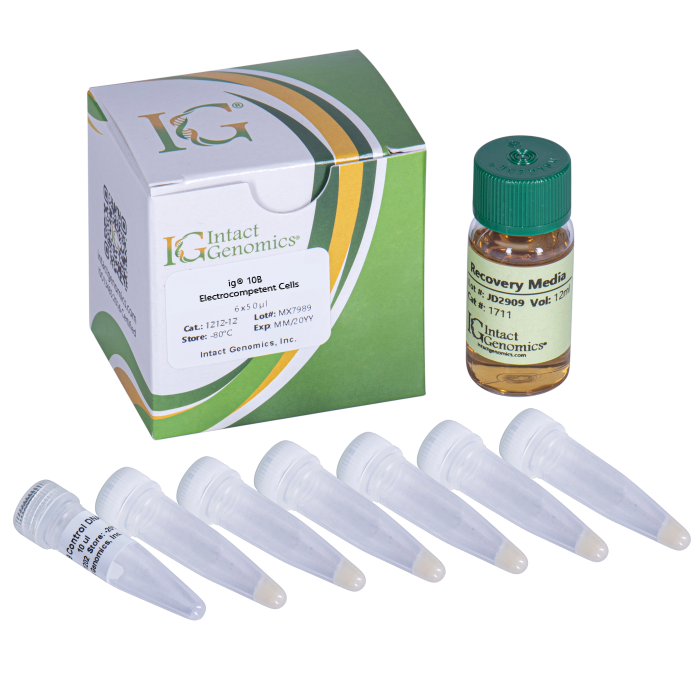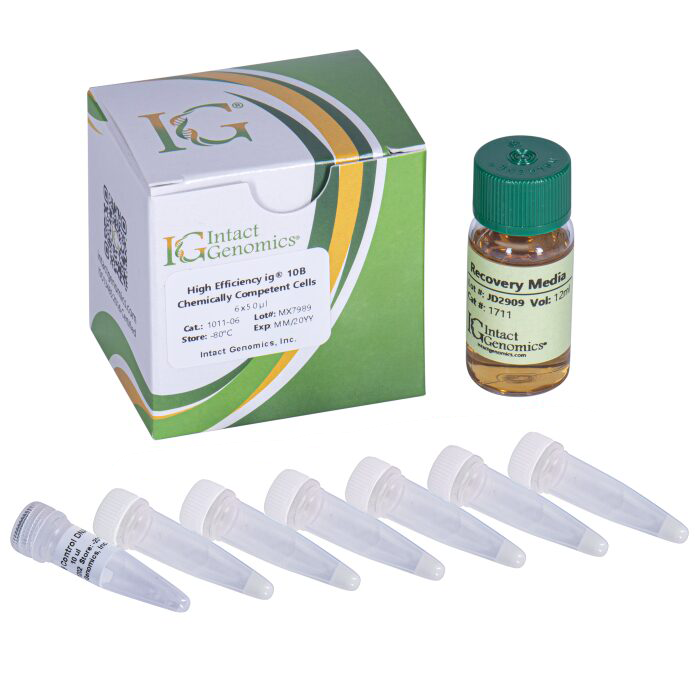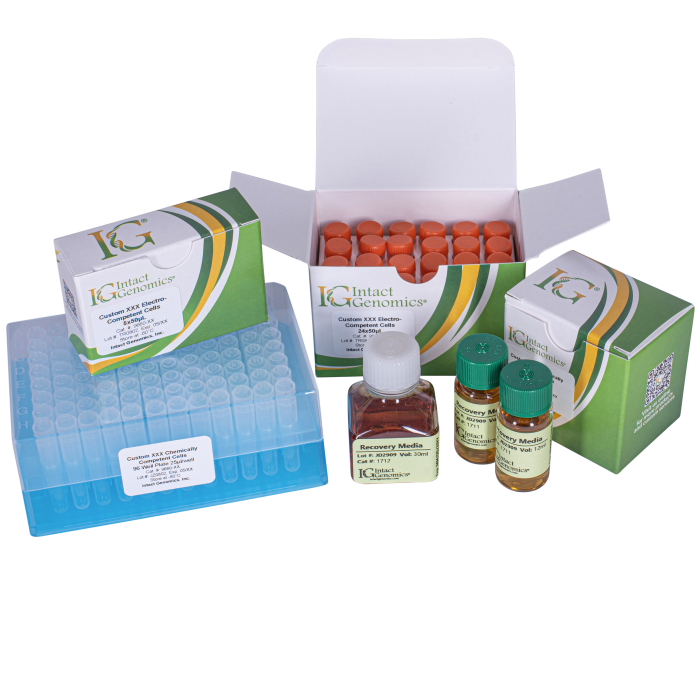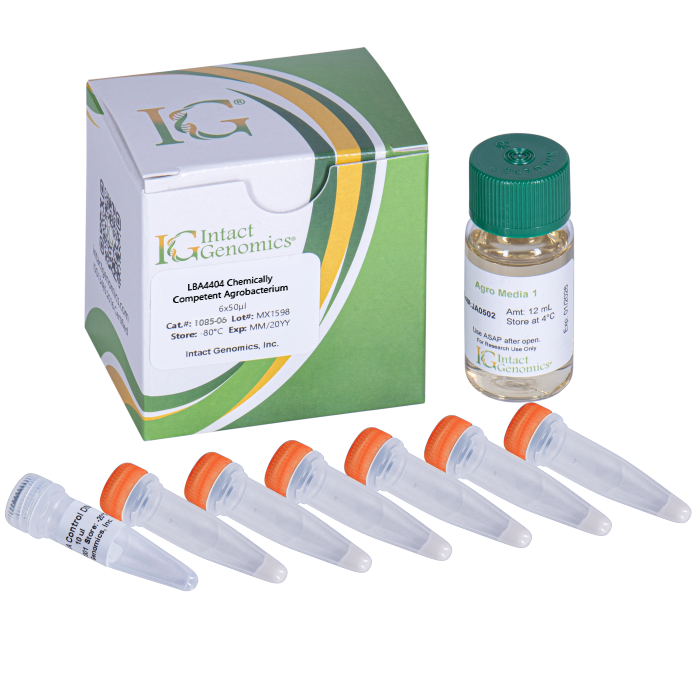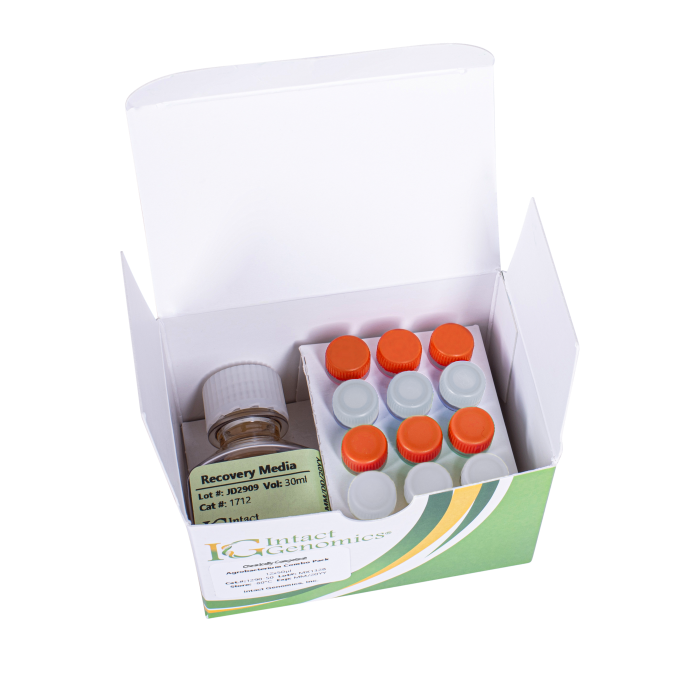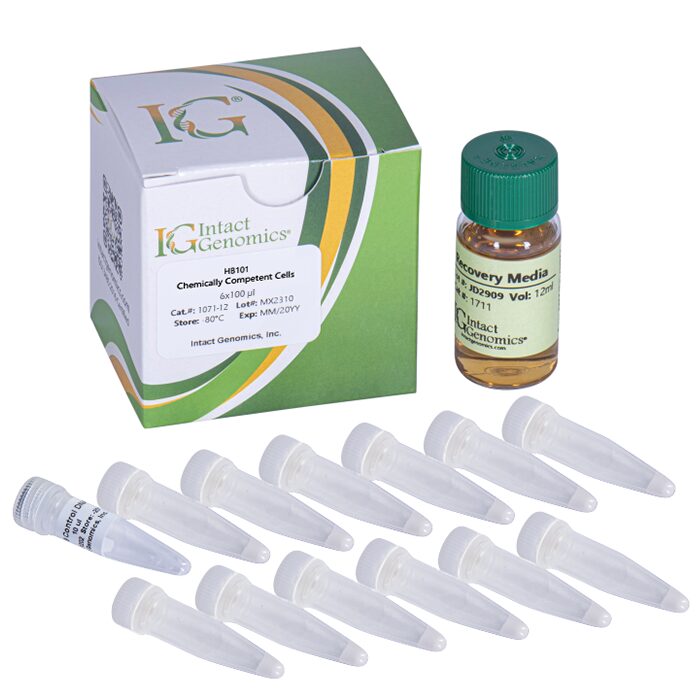Simplify your large DNA transformation workflow by eliminating time-consuming heat shock, lengthy incubations, and outgrowth procedures. Simply mix and directly plate!
DirectPlate XL™ DH10B Chemically Competent Cells
Original price was: $315.00.$180.00Current price is: $180.00.
Description
Intact Genomics (ig®) DirectPlate-XL™ DH10B Competent cells offer simple, fast, and robust results for your large DNA transformation needs – directly clone large DNA up to >250kb! DirectPlate-XL™ DH10B chemically competent E. coli cells are a perfect choice for researchers looking to simplify their large DNA transformation workflow by eliminating heat shock, lengthy incubations, and time-consuming outgrowth procedures. Simply mix and directly plate! DirectPlate-XL™ DH10B chemically competent E. coli cells provide higher transformation efficiency than any competitor’s similar product and are suitable for high-efficiency transformation in a wide variety of applications such as cloning and sub-cloning. Using proprietary technology, these cells can be used for the transformation of extremely large DNA (i.e. >10kb up to >250kb).

Please find a video below displaying the convenience and capability of this product.
Specifications
Competent cell type: Chemically Competent
Derivative of: DH10B
Species: E. coli
Format: Tubes
Transformation efficiency: ≥1 x 108 – 109 cfu/µg pUC19 DNA
Blue/white screening: Yes
Shipping condition: Dry ice
Reagents Needed for One Reaction
DirectPlate-XL™ DH10B competent cell: 50 µl
DNA (or pUC19 Control, 10 pg/µl): 1 µl
Storage
DirectPlate-XL™ DH10B competent cells: -80 ºC
pUC19 control DNA: -20 ºC
Genotype
F – mcrA ∆(mrr-hsdRMS-mcrBC) endA1 recA1 φ80dlacZ∆M15 ∆lacX74 araD139 ∆ (ara, leu)7697 galU galK rpsL (StrR) nupG λ-
Quality Control
Transformation efficiency is tested by using the pUC19 control DNA supplied with the kit and using the high-efficiency transformation protocol. Transformation efficiency should be greater than 1×108 – 109 CFU/µg pUC19 DNA. Untransformed cells are tested for appropriate antibiotic sensitivity.
General Guidelines
Follow these guidelines when using DirectPlate-XL™ DH10B chemically competent E. coli.
- Handle competent cells gently as they are highly sensitive to changes in temperature or mechanical lysis caused by pipetting.
- Thaw competent cells on ice and transform cells immediately following thawing. After adding DNA, mix by gently pipetting up and down a few times. 1013-13 1013-36
Comparison Testing
Intact Genomics has performed extensive comparison testing to prove our DirectPlate-XL™ DH10B chemically competent cells have the highest transformation efficiency on the market.
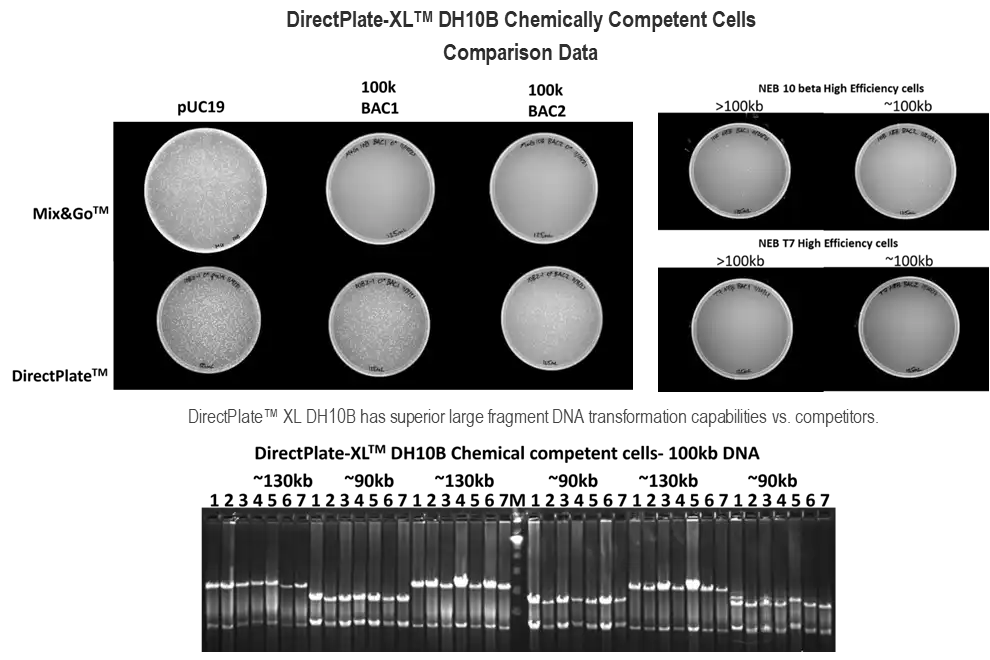 Additional experimental details are available upon request.
Additional experimental details are available upon request.
1094-06 1094-36
Additional information
| µl | 6×50µl, 12×50µl, 36×50µl, 6×100µl, 12×100µl, 24×100µl, 6×200µl, 12×200µl, 1×96 well plate (20µl/well) |
|---|
Fast Transformation Protocol
Use this procedure to transform DirectPlate-XL™ DH10B chemically competent cells. We recommend verifying the transformation efficiency of the cells using the pUC19 control DNA supplied with the kit. Do not use these cells for electroporation. No heat shock or lengthy incubations are required.
1) Remove competent cells from the -80 °C freezer and thaw completely on wet ice (10-15 minutes).
2) Aliquot 1-5 µl (1 pg-100 ng) of DNA to the thawed tube of competent cells
3) After adding DNA, mix by gently pipetting up and down a few times then place on ice for 3 minutes.
4) Spread 25 to 50 μl from each transformation directly onto ampicillin selection plates. We recommend plating two different volumes to ensure that at least one plate will have well-spaced colonies. For the pUC19 control, plate 50 μl on an LB plate containing 100 μg/ml ampicillin. Use a sterilized spreader or autoclaved ColiRoller™ plating beads to spread evenly.
5) Incubate the plates overnight at 37 °C.
Note: The procedures above are for plasmids containing Ampicillin resistant markers
Optional Higher Transformation Efficiency Protocol
This procedure will increase transformation efficiency nearly 10-fold for DirectPlate-XL™ DH10B chemically competent cells.
1) Remove competent cells from the -80 °C freezer and thaw completely on wet ice (10-15 minutes).
2) Aliquot 1-5 µl (1 pg-100 ng) of DNA to the thawed tube of competent cells
3) After adding DNA, mix by gently pipetting up and down a few times on ice for ~5 min.
4) Add 950 µl of IG Recovery Media (Cat. #1711, purchase separately) and shake-incubate at 37 °C, 200rpm for 1 hour
5) Spread 50 to 100 μl from each transformation directly onto antibiotic selection plates (37 °C pre-warmed prior to plating). We recommend plating two different volumes to ensure that at least one plate will have well-spaced colonies. For the pUC19 control, plate 50 μl on an LB plate containing 100 μg/ml ampicillin. Use a sterilized spreader or autoclaved ColiRoller™ plating beads to spread evenly.
6) Incubate the plates overnight at 37 °C.
Note: The procedures above are necessary to obtain high transformation efficiency for plasmids containing chloramphenicol, kanamycin, tetracycline or other resistant markers. For plasmids containing Ampicillin-resistant markers, this procedure will also increase efficiency near 10X compared to the Fast Transformation Protocol.


